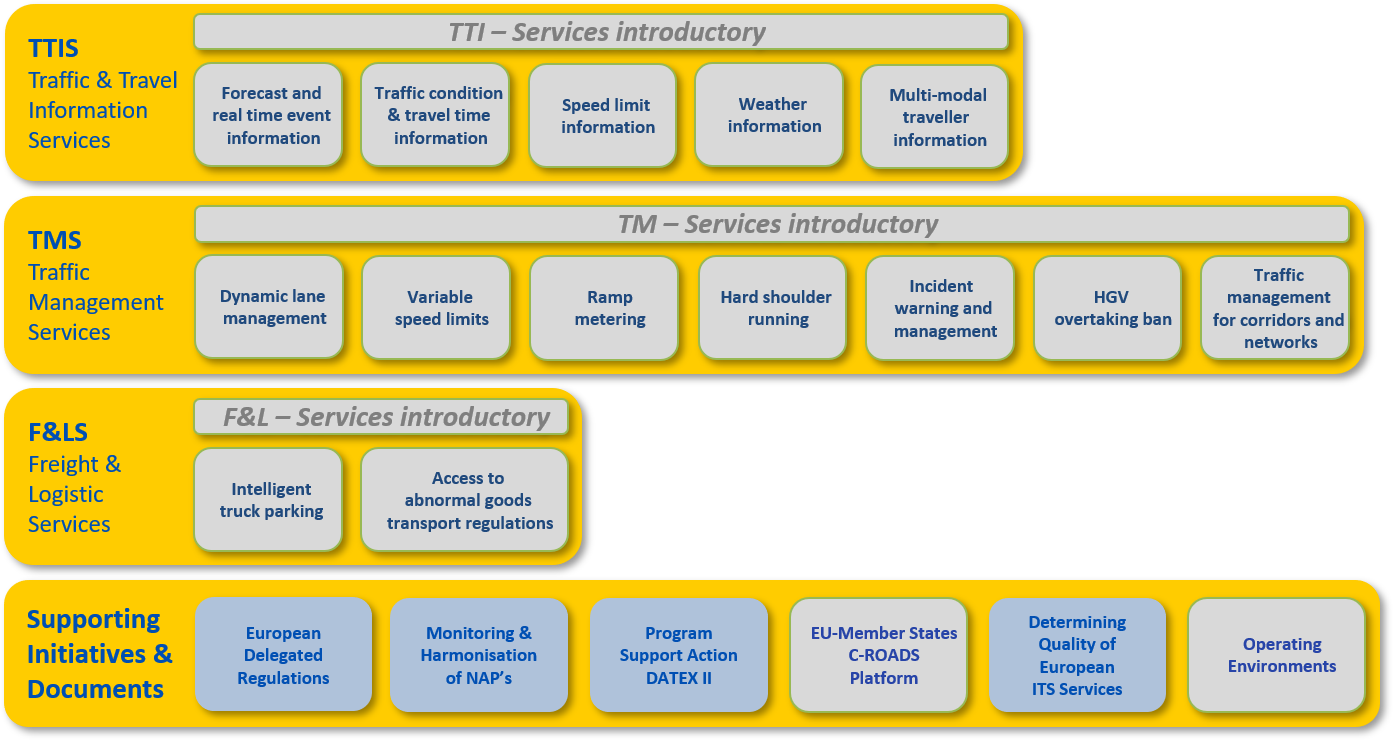Intelligent Transport Systems (ITS) are vital to increase safety and tackle Europe’s growing emission and congestion problems. They can make transport safer, more efficient and more sustainable by applying various information and communication technologies to all modes of passenger and freight transport. Moreover, the integration of existing technologies can create new services. ITS are key to support jobs and growth in the transport sector.

Against this background, the European Commission already took an important step towards the introduction and use of ITS in road transport in December 2008. The ITS Action Plan adopted on 16 December 2008 set out a series of targeted measures and a proposal for a Directive establishing the framework for their implementation. The aim was to create the necessary momentum to accelerate the market penetration of more mature ITS applications and services in Europe. The ITS Action Plan states: „Examples of applications of Intelligent Transport Systems in road transport include urban and motorway traffic management and control systems, electronic toll collection and route navigation“.
The present handbook documents the results of this cooperation, which has taken place over many years at various levels and is still ongoing, in a compact form. The handbook focuses on the so-called European ITS Core services, which are already widely used in Europe. Structured according to the service categories with in total 14 specific ITS services. The categories are:
- TTIS – Traffic and Travel Information Services,
- TMS – Traffic Management Services and
- F&LS – Freight & Logistic Services.
Whilst TTIS – Traffic and Travel Information services are primarily focused on the end-user as traveller to provide to him pre-trip and on-trip information about the situation during his journey, TMS – Traffic Management Services represent a set of instruments for the road operator to directly influence the driver while driving or, in the case of Traffic Management for Corridors and Networks, to align his traffic behaviour with the overarching strategies of public road operators traffic management.
F&LS – Freight & Logistic Services represent a special case. Intelligent Truck Parking informs about possible parking spaces at motorways for trucks and Access to Abnormal Goods Transport Regulations is an internet-based tool to register dangerous goods transports.
The overall structure and composition of the three categories and the specific ITS Core services included can be seen in Figure 1:
